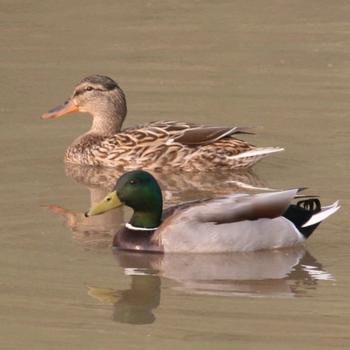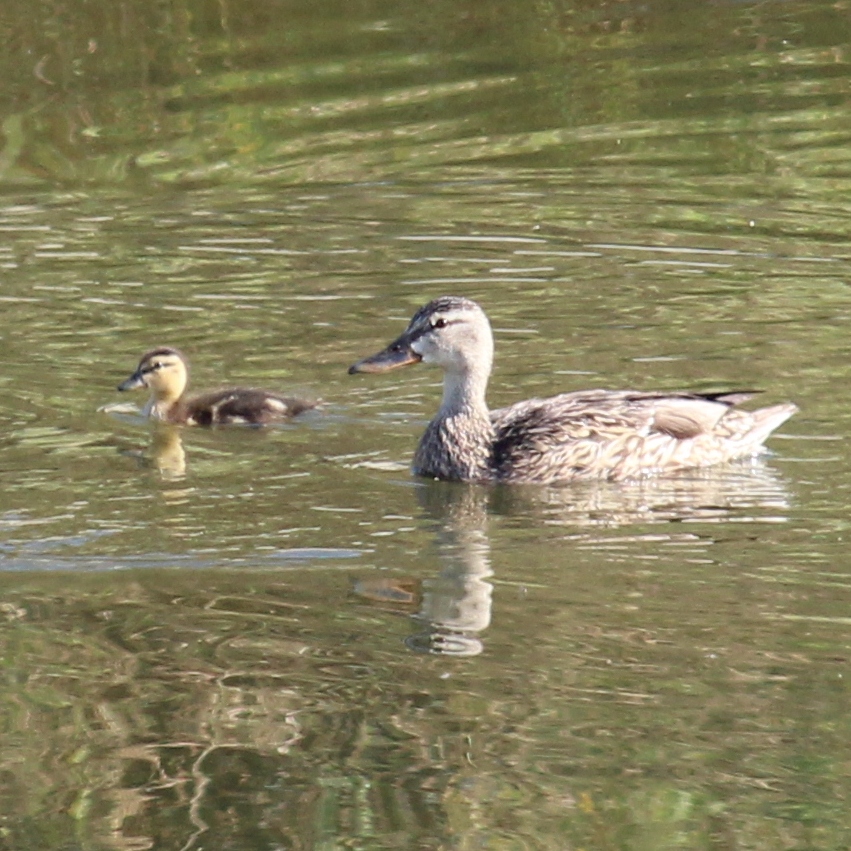Mallard (Anas platyrhynchos)

Mallard, male (front) and female - CSU San Bernardino - © Tom Benson

Mallard, female and chick - CSU San Bernardino - © Tom Benson
The Mallard is an uncommon to rare, year-round visitor to campus. Their status and abundance is tied to the presence of water in the basins around Badger Hill, where they have bred. They may also occasionally be seen feeding on the lawns or flying over head. The Mallard is a common year-round resident in southern California anywhere there is open water, especially at city parks. Many park Mallards have hybridized with domestic ducks or geese and given rise to the variety of domesticated ducks that are resident in local parks.High Count: 85, Average Count: 5-10The adult male Mallard can be identified by its green head, yellow bill, reddish brown breast, light gray body, and black rump. Female mallards are mottled brown overall with a dark eye line and an orange and brown bill. Males and females have an iridescent blue speculum (feathers on the rear edge of the upper wing) with a broad white border fore and aft.